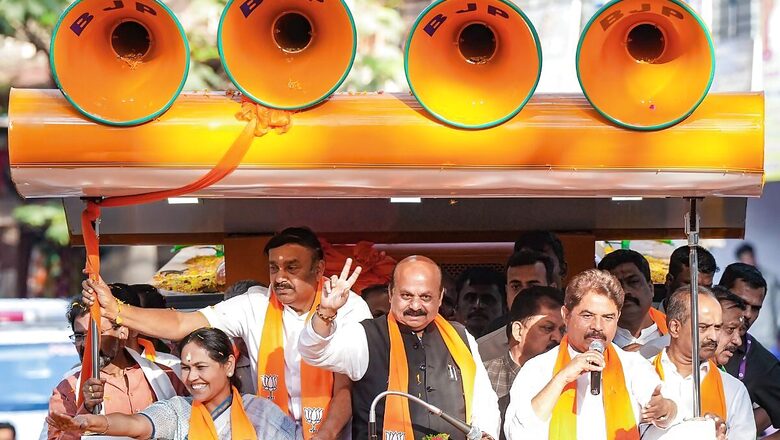
views
The BJP’s Lingayat strongman and former chief minister BS Yediyurappa was next to Raju Gowda when he said this. Evidently, it was not an off-the-cuff remark trying to shun an image, but part of a wider strategy of the BJP heading into assembly elections in April-May.
The BJP has never directly won a majority in the state polls in Karnataka, though it has managed to get the throne thanks to independent MLAs and defections.
This time, it hopes to cross the 113 mark. And it knows that is achievable only if it can get castes other than the Lingayats and Brahmins to back it.
The party is pointedly seeking support from religious mutts of those belonging to backward communities, such as the Bovi, Valmiki, Madar and Kurubas. National party president JP Nadda and Union Home Minister Amit Shah have been meeting mutt chiefs over the past few months, and the party has asked the pontiffs to be politically active.
That can help fill a vacuum for the BJP.
With the party lacking any big leader from these communities, it becomes all the more important to get the support of these mutts. It is a model that has worked for the BJP in coastal Karnataka, where the likes of the late Pejawar seer Vishwesha Tirtha Swami had backed several Hindutva issues that the BJP raised or campaigned for.
Budget a sign of strategy
A budget by a BJP government in Karnataka usually has grants given to Lingayat mutts, a practice since Yediyurappa’s tenure as CM. But with a shift in the vote strategy, the budget focus too has changed. When Chief Minister Basavaraj Bommai presented his last budget of this government in February, it did not have any reference to allocation to Lingayat mutts.
Allocations were made to institutions owned by mutts of the backward classes. Eleven development corporations belonging to these classes also received comparatively more funding in the budget. The government listed out in detail the projects and initiatives undertaken for these classes.
“It is important to be connected with every community’s mutts,” said the party’s state general secretary, Ravi Kumar. “That’s the reason we are also doing morchas (gatherings) for all the communities. Because we believe in development of all the communities. It is our party’s policy to meet and visit all the community mutts. This will also help in votes and it will be successful. This is our strategy.”
But it may not actually be that simple. Political analysts believe that the party might not gain significantly in terms of seats, but a gain in vote share is possible, and welcome, looking at long-term prospects. “There is a sense within the BJP that the traditional vote bank is not behind them completely like before with the same commitment,” said Prof Narendar Pani, dean, school of social sciences, National Institute of Advanced Studies.
He said a “whole transfer of votes” from the communities that the BJP is now focusing on “is unlikely”. “But every vote counts,” he added.
The BJP is the only party in Karnataka whose vote share has consistently risen in the assembly elections over the past two decades. Will backward communities help the saffron party cross the all-important halfway mark on its own this time? That depends on whether or not the BJP’s strategy shift also leads to a vote shift.
Read all the Latest Politics News here




















Comments
0 comment